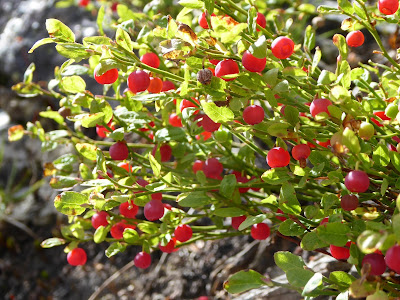We had an afternoon off yesterday, and decided to take advantage of the rare sunny day we'd lucked into to go for an explore up the Icefields Parkway. Just after the Banff / Jasper boundary, there is a marvellous trail to Wilcox Pass. Nadine was not sure she'd ever been up there, and I hadn't been for years.
It turned out to be a spectacular day. The trail is short and steep, and gets you into the treeless alpine in only about twenty minutes. Enroute, there are at least a dozen vantage points that take in the big peaks and glaciers of the Columbia Icefield area. It's heaven if you like panorama photos. Don't forget to click this shot to see it full size.
 |
| Bighorn sheep ram near Wilcox Pass |
We also spied a couple of beautiful bighorn sheep rams, but what really caught our attention after the eye candy of wildlife and mountains was the incredible coral fungus popping out of the soil.
With all the rain so far this summer, 2016 is proving to be a good mushroom season. This coral fungus highlights the beauty of mushrooms, but also the difficulty we face when asked, "what is it?" and "can you eat it?"
 |
| Coral fungus the size of a dinner plate! |
This species is in the genus
Ramaria, and there are 200 species of
Ramaria around the world! Identifiying them requires a microscope, a chemistry kit, and a whole lot of patience. As for edibility, coral fungus run the full gamut from "edible and choice" to poisonous.
So we've decided to just allow ourselves to be moved by the beauty of the coral fungus, and leave all the ID work to the experts. If you are out hiking during the rest of August, don't forget to look down. You may enjoy the view.







